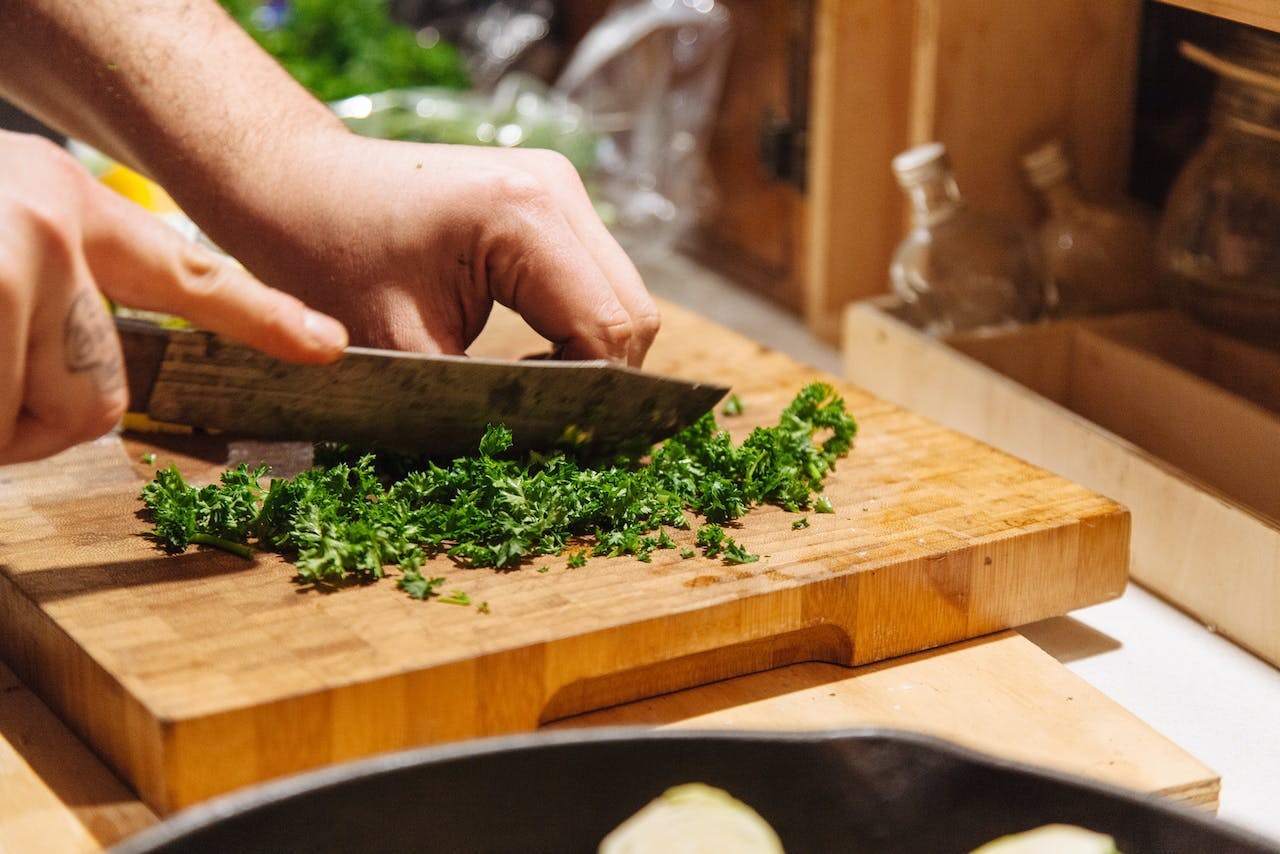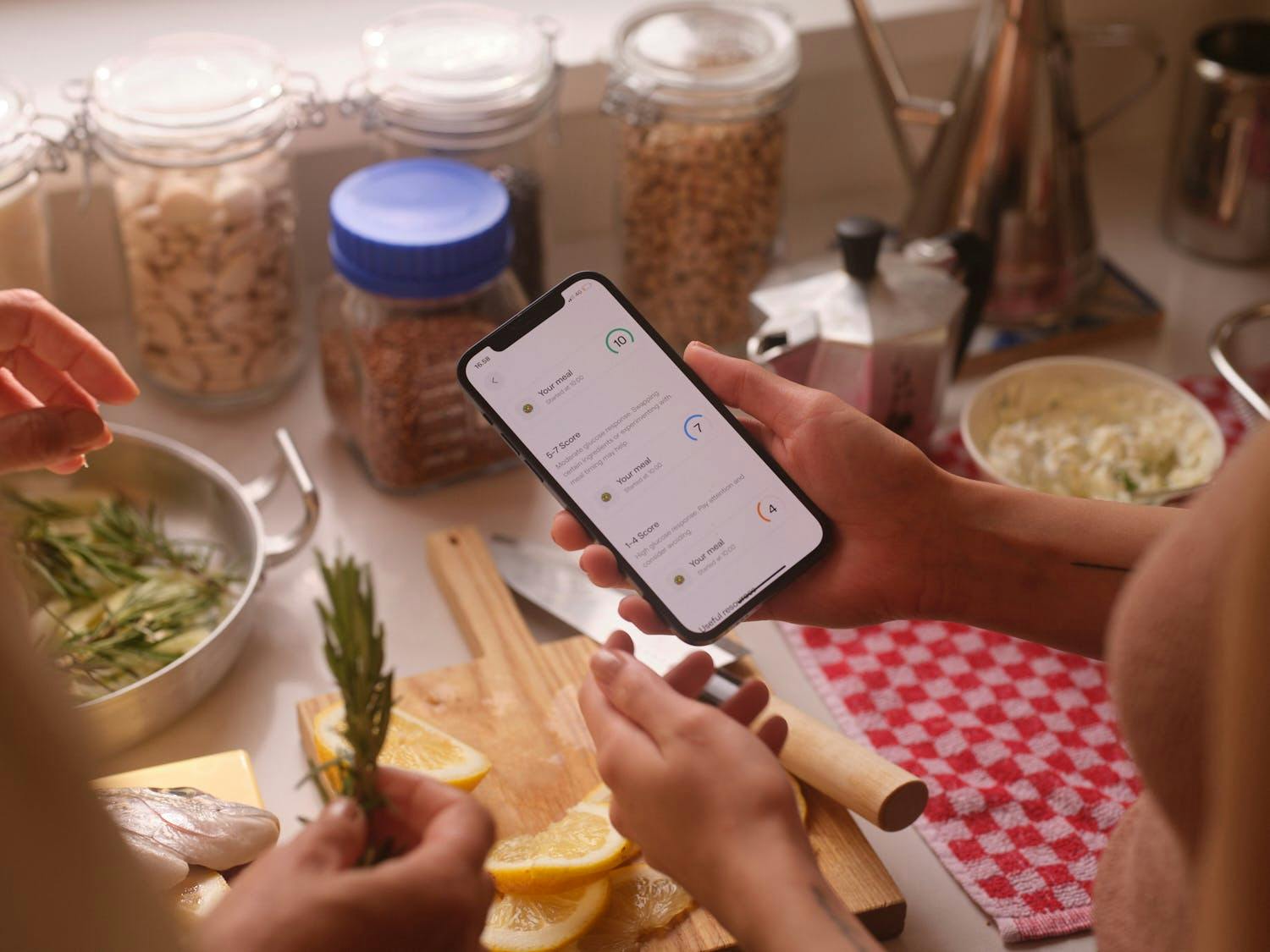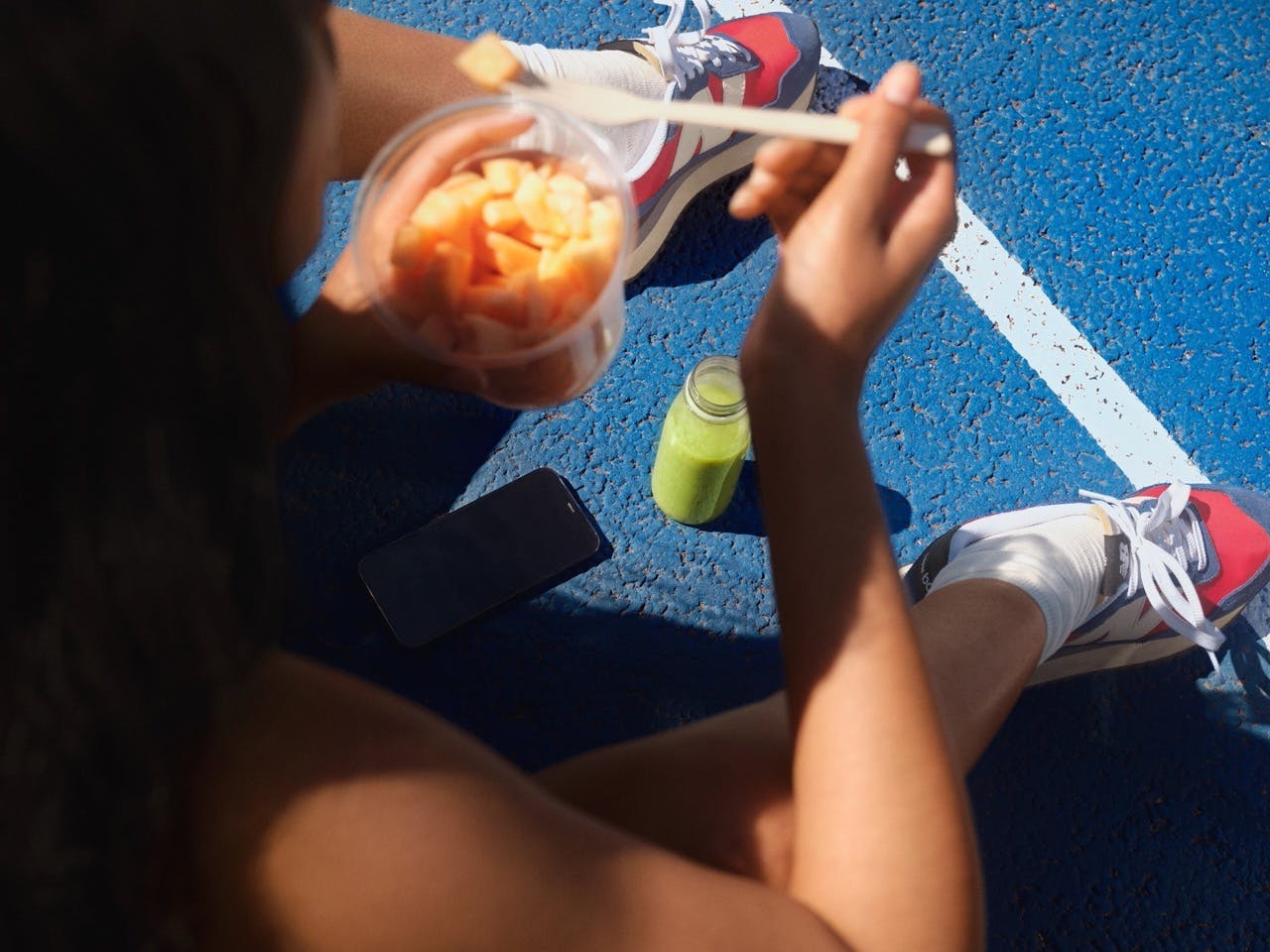Over 180 million Americans (approximately 55% of the population) want to lose weight [1].
If you count yourself among them, you may have tried any number of methods to hit your goals, ranging from the more familiar (dieting and exercise) to the trendy and unconventional (ice baths, acupuncture, and thermogenic fat-burning supplements).
The latest projections reveal that the U.S. weight management market has grown to $3.8 billion per year, and many advertisements for weight loss products and services are often accompanied by meaningless buzzwords and/or questionable “research” and “data" [2].
Weight loss myth #1: Foods marked “low-fat,” “keto-friendly,” and “organic” are better for you.
Viral fad diets as we know them have been around for hundreds of years, from the English poet Lord Byron’s early 1800s regimen of biscuits and potatoes drenched in vinegar to more recent popular trends such as low-fat, organic, keto-friendly, and juicing (or liquid diets more broadly) [3].
The claims of these diets range from increased energy and reduced inflammation to weight loss, microbiome benefits, and more, but the reality is more complex.
What the science says
1. Low-fat
The low-fat craze in the U.S. began with recommendations presented in the first edition of The Dietary Goals of the United States in 1977, which led to widespread high-carb (i.e., high-sugar) diets afterward [4]. This was also around the time obesity rates among children and adolescents ages 2-19 began to triple [5].
However, fats are actually critical for your health. They help with the following:
- the absorption of Vitamins A, D, E, and K (which are fat-soluble — i.e., only dissolvable in fat and stored in your tissues)
- build the exterior membranes of your cells
- provide padding to protect your organs
- slow the body’s absorption of glucose in the intestines, minimizing blood sugar spikes
Don’t be afraid of eating monounsaturated fats (found in olive oil, almonds, cashews, pistachios, avocados, and eggs), which research shows can improve insulin sensitivity, and polyunsaturated fats (found as omega-3 fatty acids in fish such as salmon and herring or omega-6 fatty acids in plant-based oils such as safflower oil, grapeseed oil, and others) [6].
Though saturated fats from milk, cheese, butter, and some meats have been labeled “bad” for decades (they were assumed to cause cardiovascular disease), they can absolutely be a part of a healthy diet as long as you limit your intake [7].
2. Organic
This term — which requires a certification that can be expensive and difficult for small farmers to obtain — is often connoted with “healthy” and “pesticide-free,” but organic farms are still able to use select chemicals (such as copper and sulfur) on their crops, which may not be healthier than their synthetic alternatives [8-10].
That said, there are other reasons besides nutrition that may inspire you to shop organic produce and whole foods, including environmental and agricultural [11].
Better yet, visit your local farmers market if possible and support the farmers and growers in your community. Some may not have an organic certification, but avoid pesticides on their crops — all you have to do is ask.
Organic snack foods, on the other hand, tend to be high in refined carbs, which research has shown are linked to insulin resistance — so it’s best to be wary of processed foods with an “organic” label and check your labels thoroughly [12, 13].
3. Keto-friendly
Keto-friendly snacks, condiments, and foods have flooded supermarket shelves, but just because something is labeled “keto-friendly” doesn’t mean it’s healthy for you.
In reality, these items are often loaded with processed ingredients manipulated to show macros that work for that diet. They are simply labeled as keto-friendly because they contain fewer “net carbs” which is simply carbs minus the fiber content (why some products are stuffed with processed forms of fiber).
As always, it’s key to check the ingredients and nutrition labels for highly processed ingredients, and your best option is usually to stick to whole foods that you prepare yourself.
4. Juicing
Though juicing allows you to consume nutrients from a large quantity of produce in a small volume (a single 16-ounce juice is often 1-2 pounds of produce), the process itself removes a majority of the fiber from any fruits and vegetables used. Fiber helps slow down a blood sugar spike, supports your gut microbiome, and acts as a carrier for many antioxidants, meaning that juice is less nutritional than eating whole fruits or vegetables [14, 15].
What to do with this information
- Don’t fear fats. Eating monounsaturated and polyunsaturated fats from sources such as olive oil, nuts, seeds, avocados, eggs, salmon, herring, and more are essential to nutrient absorption, cell repair, blood sugar balancing, and insulin sensitivity.
- Look past labels on boxes that simply say “keto,” “Paleo,” “gluten-free,” or “organic." On their own, these terms aren’t necessarily good or bad, and it’s key to read the ingredients carefully to understand exactly what’s in the snack, sauce, or item you’re interested in buying.
Weight loss myth #2: You can lose weight from taking supplements.
Weight loss supplements can be particularly enticing. They promise fast results with little effort, and often use herbal ingredients or compounds that may genuinely be beneficial for the body, but lack research to support weight loss.
Common weight loss supplements you’ll see are thermogenic fat burners and appetite suppressants such as caffeine, Yohimbe, and green tea extract.
What the science says
Your body generates heat when it burns calories, and thermogenic (i.e., heat-producing) fat burners claim that they can accelerate fat burning by “stimulating” your metabolism.
Common thermogenic ingredients include:
- caffeine, bitter orange
- green tea extract
- capsaicin (from chili peppers)
- chromium picolinate
A meta-analysis of 21 studies indicates limited evidence that thermogenic fat-burning supplements work to reduce body mass or improve cardiometabolic health [16].
Another report, released in Obesity in 2021, examined 315 randomized-controlled clinical trials studying 12 different ingredients [17]. After eliminating 263 studies that were found to be biased or have conflicts of interest, researchers learned that of the remaining 56, only 16 found that some weight loss was possible, with no consistent results for any one particular ingredient.
What to do with this information
Addressing your sleep patterns, exercise times, nutrition, and stress coping mechanisms can also play a role in hunger and cravings. Here are some things you can try instead of supplements:
- Adjust your diet to include non-starchy vegetables, pasture-raised meats, wild fish, healthy fats, and whole grains.
- Pay attention the order in which you eat foods (eat protein, vegetables, and fat 15 minutes before carbs).
- Go on a walk after a meal to stabilize your blood sugar.
- Try resistance exercises instead of cardio-only.
- Sleep 7-8 hours a night.
You’ll also want to steer clear of any products containing ephedrine alkaloids or ma huang, a once-used weight loss supplement that can quicken heartbeat and elevate blood pressure as well as lead to psychiatric symptoms [18, 19]. Though the FDA made ephedra illegal after research discovered that the herb was responsible for 64% of adverse reactions at poison control centers (despite accounting for less than 1% of herbal product sales), you can still find ephedra available online on Amazon.
Weight loss myth #3: You can shed pounds by exercising at an optimal heart rate (i.e., the “fat burning zone”).
Heart rate zones are displayed as a percentage of your maximum heart rate, or (MHR), and correspond to the intensity level of the activity you’re doing. The “fat burning zone” is a myth that claims that exercising in a heart range that is approximately 70-80% of your MHR is the most effective way to lose weight.
What the science says
Your body turns the food you eat into energy — and the sum of the complex chemical reactions that make this possible is called your metabolism.
The rate at which our bodies turn to fat or carbs for energy depends on a number of factors, including:
- the activity type (even sitting while you work from home is an activity)
- individual biochemistry
- genetics
When you exercise, your body needs to generate adenosine triphosphate (ATP) — the battery of your body — via aerobic metabolism (which uses oxygen) or anaerobic metabolism (which doesn’t use oxygen)[20].
The type of metabolism your body uses depends on the intensity of exercise (i.e., how much ATP your body needs to generate, and how quickly). During low-intensity exercise, your body relies on aerobic metabolism and burns a higher percentage of fat than carbohydrates to produce ATP [21].
As the intensity rises, the ratio shifts and your body starts to use its carbohydrate reserves instead (it’s more efficient, since turning fat into energy requires oxygen). However, that doesn’t mean you’re no longer burning fat — it just means you’re burning more carbs instead of fat.
HIIT and resistance training in particular can be great workouts because of greater excess post-exercise energy expenditure, or afterburn effect — 2021 study[22] showed that moderately trained women showed a “significant increase in energy expenditure” 14 hours after both HIIT and resistance training workouts [22].
This means that your body will still be burning a small number of calories after you exercise, as it restores your resting metabolic rate.
What to do with this information
Workout classes at your local gym or branded programs may all promise to be the best at fat burning, avoid claims about “fat burning zones” or fitness gurus who claim that you can lose fat in isolated areas of the body, Instead, opt for balanced workouts that include:
- Aerobic exercise: A study from 2017 found that high-intensity aerobic exercise — between 70-80% heart rate reserve — has the most significant impact on weight loss in obese adults) [23].
- HIIT: HIIT is effective in weight loss and results in greater cardiorespiratory improvements over a shorter period of time compared to medium intensity continuous training [24].
- Resistance training: Strength exercises can increase your muscles’ resting metabolic rate and reduce the risk of metabolic syndrome by 17% [25, 26].
Ultimately, the best exercise is the one you’ll stick to — whether it’s aerobic, HIIT, resistance training, or some combination of the three.
Weight loss myth #4: Ice baths, cryotherapy, and other cold treatments can help you lose weight.
One of the latest trends in weight loss is cold therapy — which includes ice baths, cryotherapy, and cryolipolysis, among other techniques.
Cryolipolysis is a non-surgical fat reduction procedure that uses cold to “freeze” off fat cells, while ice baths and cryotherapy proponents claim that exposing your body to cold helps you lose weight, since it will expend energy and burn calories to restore your temperature to a healthy range [27].
What the science says
It’s true that your body will respond to any abrupt and drastic decline in temperature by trying to get back to 98.6 degrees Fahrenheit, and that this process burns calories.
When your body is exposed to the cold, a specific type of fat — known as brown adipose tissue (or BAT) — begins to emit heat to regulate your internal temperature, expending calories in the process [28].
That said, there’s limited research on whether ice baths and cryotherapy can actually help you lose weight in the long run — i.e., when you’re at a normal body temperature. When it comes to cryolipolysis, on the other hand, a randomized-controlled study in 2020 found that a single application of treatment didn’t produce a significant effect on fat thickness in the lower abdomen of healthy women [29].
What to do with this information
Skip trendy treatment programs, cold-related or not, that often cost considerable amounts of money with little-to-no evidence supporting long-term results, sustainability, or health benefits. (Cryolipolysis can cost between $2,000 and $4,000 per session.)
Instead of relying on it for weight loss purposes, consider a cold immersion up to a few hours after working out to improve soreness the next day and increase dopamine levels [30, 31]. Still, it’s important to note that cold isn’t effective when it comes to muscle protein synthesis, and may impact your performance — it all depends on your goals [32].
Key Takeaways
It’s easy to reach for convenient and well-packaged weight loss products and recommendations, especially if there’s social capital behind them (i.e., media coverage, celebrity endorsements, social media virality). Here’s a quick recap of key things you can do today to support your weight loss:
- Don’t be afraid to eat monounsaturated and polyunsaturated fats from olive oil, nuts, seeds, avocados, eggs, and fatty fish.
- Keep an eye out for highly processed ingredients on product labels (even ones marked with “Paleo,” “keto-friendly,” or another diet).
- Save your money — instead of buying weight loss supplements, opt for whole fruits and vegetables, quality fats and proteins, and a gym membership. Steer clear of anything with ephedra or CLA (conjugated lineolic acid), which can reduce insulin sensitivity[33].
- Practice high-intensity aerobic exercise, HIIT, or resistance training to lose weight.
- Use cold immersion for improve muscle soreness and increase dopamine, not weight loss or athletic performance.
References:
- https://news.gallup.com/poll/388460/percentage-americans-consider-themselves-overweight.aspx
- https://www.ibisworld.com/industry-statistics/market-size/weight-loss-services-united-states/
- https://www.bbc.com/news/magazine-16351761
- https://naldc.nal.usda.gov/download/1759572/PDF
- https://www.niddk.nih.gov/health-information/health-statistics/overweight-obesity
- https://pubmed.ncbi.nlm.nih.gov/11317662/
- https://www.ncbi.nlm.nih.gov/pmc/articles/PMC8541481/
- https://geneticliteracyproject.org/2022/08/18/difficult-if-not-impossible-why-us-organic-standards-fail-farmers-and-consumers/
- https://blogs.scientificamerican.com/science-sushi/httpblogsscientificamericancomscience-sushi20110718mythbusting-101-organic-farming-conventional-agriculture/
- https://pubmed.ncbi.nlm.nih.gov/29073935/
- https://www.colorado.edu/ecenter/2021/03/17/positive-impact-organic-foods
- https://www.hsph.harvard.edu/news/hsph-in-the-news/organic-snack-foods-unhealthy
- https://pubmed.ncbi.nlm.nih.gov/25477716/
- https://www.ncbi.nlm.nih.gov/pmc/articles/PMC8153313/
- https://pubmed.ncbi.nlm.nih.gov/21142013/
- https://pubmed.ncbi.nlm.nih.gov/33427571/
- https://onlinelibrary.wiley.com/doi/epdf/10.1002/oby.23110
- https://www.acpjournals.org/doi/10.7326/0003-4819-138-6-200303180-00010
- http://health.harvard.edu/staying-healthy/the-dangers-of-the-herb-ephedra
- https://sportsmedicine-open.springeropen.com/articles/10.1186/s40798-015-0012-1
- https://openoregon.pressbooks.pub/nutritionscience/chapter/10b-fuel-sources-exercise/
- https://www.ncbi.nlm.nih.gov/pmc/articles/PMC8439678/
- https://hqlo.biomedcentral.com/articles/10.1186/s12955-017-0743-4
- https://bmjopensem.bmj.com/content/7/3/e001021
- https://www.ncbi.nlm.nih.gov/pmc/articles/PMC3661116/
- https://www.mayoclinicproceedings.org/article/S0025-6196(17)30167-2/fulltext
- https://www.wired.com/2013/02/ff-cold-weight-loss/
- https://www.sciencedirect.com/topics/medicine-and-dentistry/brown-adipose-tissue
- https://pubmed.ncbi.nlm.nih.gov/31375459/
- https://link.springer.com/article/10.1007/s40279-022-01644-9
- https://sci-hub.se/https://doi.org/10.1007/s004210050065
- https://physoc.onlinelibrary.wiley.com/doi/10.1113/JP278996
- https://www.ncbi.nlm.nih.gov/pmc/articles/PMC4823612/


